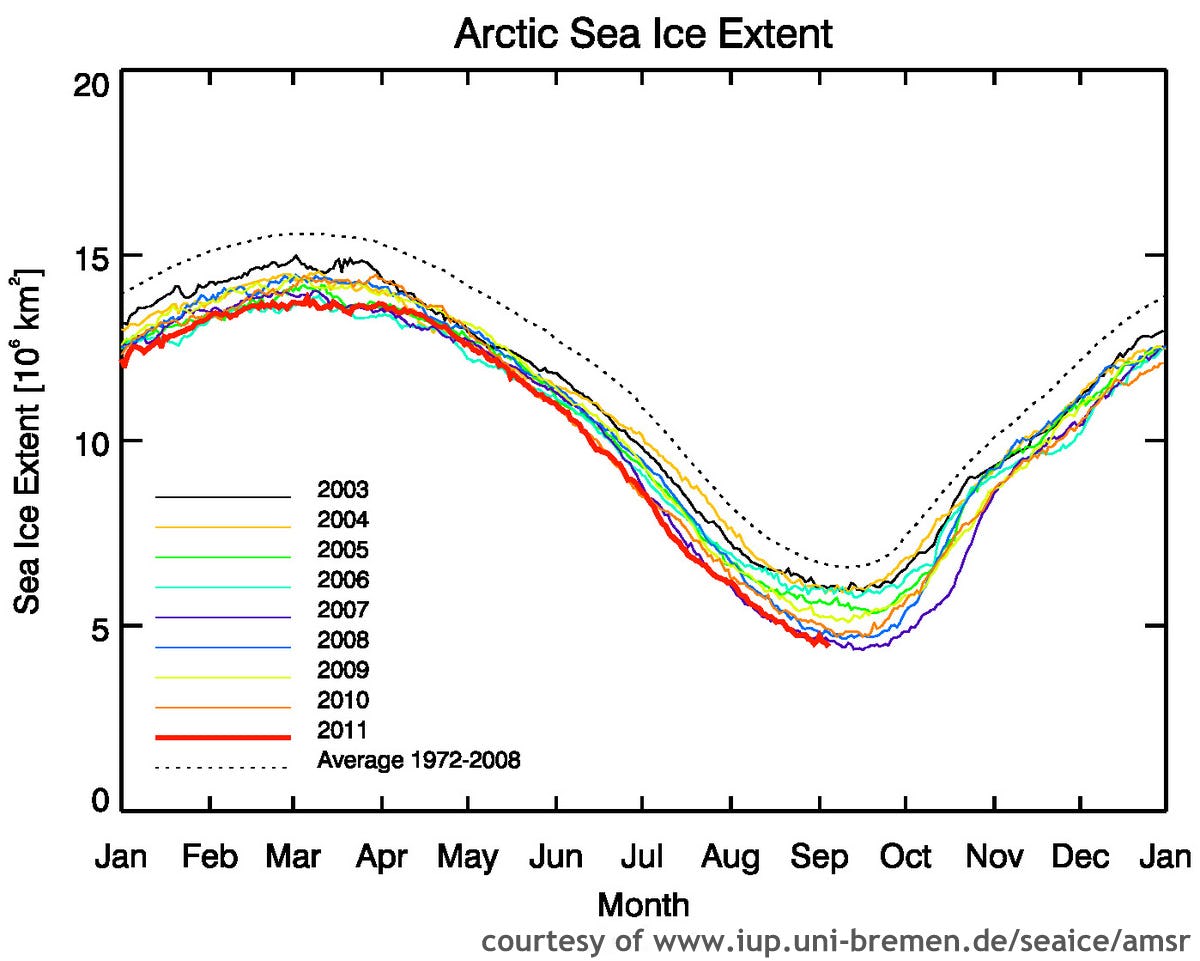Sea Ice Extent In August Second Lowest On Record

Diagram showing Arctic sea ice extent since 1979 up to 2011. Diagram: Institute for Environmental Physics, University of Bremen
The National Snow and Ice Data Center (NSIDC) today released the latest figures for Arctic sea ice extent. According to the center, the average for the month of August 2011 reached the second lowest level since satellite-based observations began in 1979. Mean ice extent for August was 5.52 million square kilometers, about 28 percent below the monthly average for 1979-2000.
August 2011 ice extent tracks just 160,000 square kilometers above the record low for the month set in 2007. Throughout August ice extent continued to retreat at a rate of 67,700 square kilometers per day; compared to 53,700 square kilometers for August 1979-2000.
As a result of the melting, the Northwest Passages, which have been navigable for much of August, remain virtually ice free. Across the Arctic Ocean, the Northern Sea Route, has been open for shipping since early July.
During the second half of August the ice retreated faster than it did over the same period in the record year of 2007. By August 31, 2011 sea ice extent measured 4.63 million square kilometers, just 100,000 square kilometers above the previous record for the same day set in 2007 and below the absolute minimum extents from September 2010 and 2008. Thus, even if sea ice would have declined no further since end the end of last month, 2011 would have surpassed 2008 and 2010 as the second- and third-lowest absolute minima.
The retreat of the ice, however, continues unabated since August 31. Earlier today the University of Bremen released Higher-resolution Advanced Microwave Scanning Radiometer-Earth Observing System (AMSR-E) data, which showed that ice extent for September 5, 2011 set a new all time record low, surpassing the previous minimum extent for the same day in 2007.
Despite continually weakening solar radiation as the sun heads towards the autumn equinox and air temperatures over the North Pole having dropped to below freezing, the melt season in the Arctic will continue for another 12-16 days. The largest potential for melting this late during the year originates from warm water melting the ice from below, as well as winds and ocean currents pushing the ice together, thus further reducing extent.
The NSIDC did not make any predication if the absolute 2011 minimum could surpass the record low of 2007, instead citing a number of variables such as heat retention of the Arctic Ocean, wind patterns, and ice thickness, which will ultimately influence whether 2011 sets a new record for minimum extent.